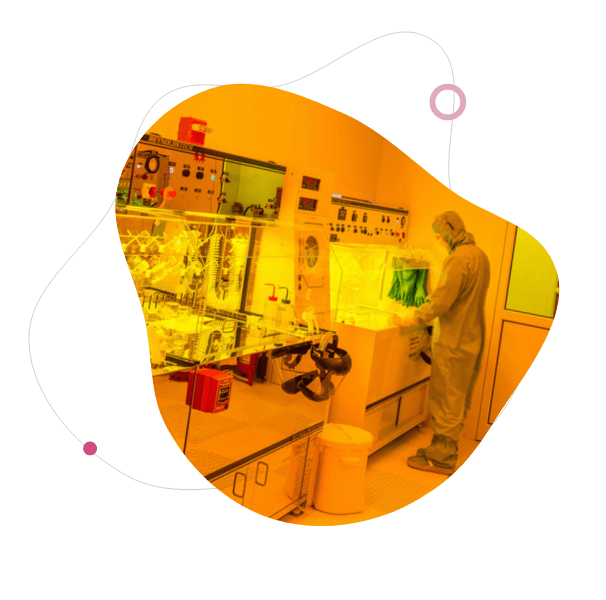When the manuals for how to build a quantum computer are written, a critical step, at least for a certain class of quantum computers, will be sending particles of light, or photons, through the circuits of a computer chip.
That is what Applied Nanotools, an Edmonton-based company is now doing, using the advanced nanofabrication equipment and facilities at the University of British Columbia, which is part of the Quantum Colaboratory (Quantum Colab) research and development environment that aims to bring quantum technology to life.
“Collaborations are very important from our perspective, and I’m sure other Canadian technology companies would say the same,” says Mirwais Aktary, chief executive officer of Applied Nanotools.
Quantum Colab is comprised of the facilities and researchers at the Stewart Blusson Quantum Matter Institute at the University of British Columbia as well as Institut Quantique at the Université de Sherbrooke, and the Transformative Quantum Technologies (TQT) technology vector research initiative of the Institute for Quantum Computing at the University of Waterloo.
Applied Nanotools offers a silicon photonics fabrication service – making chips with circuits that carry light — to companies as well as academic researchers around the world who are using them in various applications.
Although the telecommunications industry and other industries involved in data storage and signal processing are using photonic chips, the major up-and-coming application is in quantum computing, Aktary says.
“A lot of recent work has to do with this field of quantum computing where people are trying to build quantum computers using silicon photonics as a platform.”
A growing number of startup companies as well as academic researchers are striving to open up an entirely new technological era by developing quantum computers that would be useful for solving large problems and doing complex simulations that cannot be done even with the supercomputers we have today.
The easiest way to do quantum computing would be on silicon chips, since those can be readily manufactured. However, there are challenges in embedding these chips with circuits that can carry light particles.
Applied Nanotools is investing heavily in research and development to address those challenges.
To do so, it is working in collaboration with various university labs that have the facilities, equipment and expertise the company needs.
In one project, Applied Nanotools is working with a new approach known as photonic wire bonding, in collaboration with a team led by Lukas Chrostowski, an electrical and computer engineering professor at the University of British Columbia.
“Essentially, what we are doing is wire bonding a fiber right onto the chip,” Aktary says.
The advanced nanofabrication facility at UBC has a specialized photonic wire bonding tool that can do this job, as well an electron-beam lithography tool capable of writing tiny features, just a few nanometers in size, onto the wafers.
Without access to such advanced equipment, “we would not be able to do our silicon photonics work,” Aktary says.
But he adds that such collaborations also help the university partners. The universities get some cost recovery from leasing time on the equipment and the researchers benefit from the knowledge that comes from commercializing these technologies.
Ultimately, collaboration speeds up the process of taking technology from the lab bench to commercialization. This benefits the entire country, Aktary says.
“Canada does a lot of fundamental research, but we want to translate that to industries,” Aktary says. “It’s really about creating fundamental processes that can be commercialized.”
Even though other companies will be building quantum computers, Aktary says it is exciting to be fabricating the chips for them and to be a partner on the ground floor of these developments.
“We are doing the prototyping work to enable some of the early applications. We will see if this moves into high volume production. For that to happen in Canada, we have to invest significantly in the fabrication and in the infrastructure,” he says.
But all the indications are that rapid progress is being made in building useful and scalable quantum computer that can be commercialized, Aktary says.
“They are on a path to making a commercially viable quantum computer. They have a roadmap for that and I think there is a good chance it will happen,” he says.
